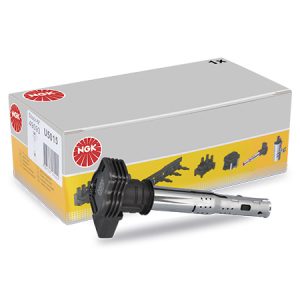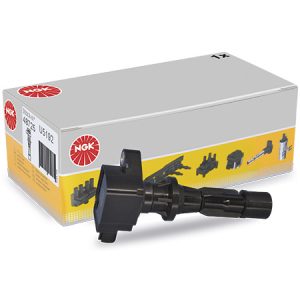


These are high-tech components., Its function is to convert the voltage of the power supply system that varies from 12 to 14 volts into a high voltage that can vary to reach close to 30.000 volts. This component has also been evolving over the years. Regarding the use aspect, we can divide the coils into:
;
–; Coils for systems with distributor: where a single coil is responsible for supplying the high voltage to a distributor that will distribute it to the cylinders through the ignition cables..
;
–; coils in block: are coils where in a single body the associated coils. This system is also known as static and does not use a distributor., There are high voltage outputs in the coil to the twin cylinders that are distributed to the spark plugs via ignition cables. In this system there is no ignition timing adjustment, its calibration is carried out together with the injection system.
;
–; individual coils: many modern vehicles are using this configuration, where for each cylinder there is an individual coil, you can use ignition or pen-type cables where there are no cables, the coils are installed directly on the spark plugs.
;
As for the constructive characteristics:
Coils without attached module: These are coils where the coil feed control is performed directly by the injection module or ignition module, in this type of coils we can measure the primary and secondary resistances. The coil is powered by a high current supplied by the control module.
Coils with attached control module: These coils have the control module attached to the coil body.. Its advantage is that the injection module provides a command signal to the coil.. The high current part is in the coil. In these coils we usually do not have access to primary and secondary resistance measurement.